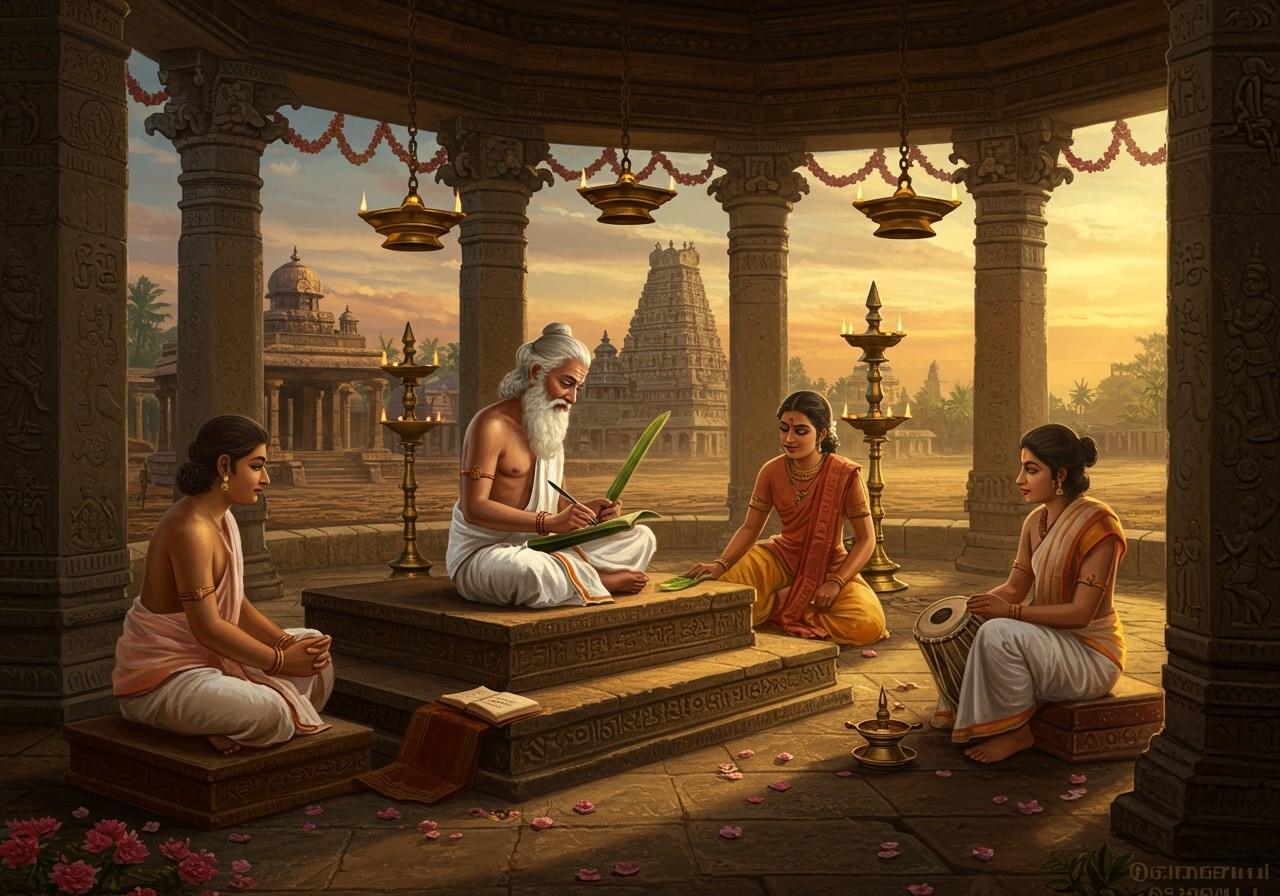
The Tolkappiyam stands as a cornerstone of Tamil literature, providing invaluable insights into the culture, language, and society of ancient Tamil Nadu. Associated with the Sangam Age (300 BCE – 300 CE), a period renowned for its flourishing literary and artistic landscape, the Tolkappiyam offers a glimpse into a rich historical tapestry. This blog delves into the significance of the Tolkappiyam, its position within Sangam literature, and its portrayal of ancient Tamil society.
Historical Context and Classification
The Early Sangam Period
Attributed to the early Sangam period, often considered part of the First Sangam (Mutar Sangam), the Tolkappiyam’s origins are estimated between 300 BCE and 300 CE. This era witnessed the genesis of Tamil literature, and the Tolkappiyam’s presence marks a pivotal moment in this literary evolution. Tamil is recognized as one of the oldest literatures in India, with inscriptions discovered that date back to the 3rd century BCE.
The Three Sangams
- First Sangam (Mutar Sangam): This earliest period is shrouded in some mystery, with many of its works considered lost. The Tolkappiyam is a significant exception, providing a tangible link to this ancient era.
- Middle Sangam (Idai Sangam): Bridging the gap between the First and Last Sangams, the Middle Sangam continued the development of Tamil literature.
- Last Sangam (Kadai Sangam): This final period saw the culmination of Sangam literature, with works that continue to be studied and celebrated today.
The Tolkappiyam distinguishes itself as a grammatical treatise, laying the foundation for subsequent Tamil literary works. Its focus on linguistic structure sets it apart from purely literary creations.
Structure and Content of the Tolkappiyam
Three Main Sections
- Ezhuttadikaram (Orthography): This section delves into the sounds of ancient Tamil, exploring phonetics and phonology. It provides a framework for understanding the basic building blocks of the language.
- Solladikaram (Morphology and Syntax): Focusing on word formation, this section examines how words are combined and modified to create meaning. It delves into the intricacies of Tamil grammar.
- Poruladikaram (Semantics and Pragmatics): Exploring the meanings of words in different contexts, this section delves into the nuances of language use. It provides insights into how meaning is constructed and interpreted.
Each section meticulously details the grammatical rules and linguistic intricacies of ancient Tamil, demonstrating the sophisticated understanding of language at the time.
Ancient Tamil Society as Depicted in Tolkappiyam
Division of Landscapes (Tinai)
- Kurinji (Mountains): This landscape is associated with love and courtship, reflecting the mountainous terrain of the region.
- Mullai (Forests): Representing pastoral life, this landscape evokes the imagery of shepherds and their flocks amidst the forest.
- Marutham (Agricultural Lands): This landscape symbolizes prosperity and settled life, highlighting the importance of agriculture in ancient Tamil society.
- Neithal (Seashores): Associated with fishing and coastal communities, this landscape portrays the life and culture of those who lived by the sea.
- Palai (Deserts): This landscape represents separation and hardship, reflecting the challenges of life in arid regions.
Each landscape is linked to specific cultural practices, occupations, and deities, offering a comprehensive view of ancient Tamil life. The Tolkappiyam also provides glimpses into kinship systems, the importance of family, rituals, festivals, and religious practices. Ethical values such as hospitality, bravery, and integrity are emphasized.
Influence and Legacy
The Tolkappiyam’s influence on later Tamil literature is profound. Its grammatical framework shaped the structure and style of subsequent works, with poets and scholars drawing upon its principles. The text’s categorization of landscapes and cultural elements is reflected in later Sangam poetry, such as the Ettuthokai and Pathuppattu anthologies. The Tolkappiyam’s legacy continues to be celebrated through academic studies, literary conferences, and cultural festivals.
Connecting with Tamil Heritage through Poojn.in
Poojn.in offers authentic Tamil ritual items that connect you to the rich cultural heritage of the Sangam Age. Discover traditional items mentioned in texts like the Tolkappiyam:
- Kungumam (குங்குமம்): Pure, natural vermillion powder for rituals and ceremonies. Our Kungumam is sourced from trusted suppliers who adhere to traditional preparation methods, ensuring its authenticity and purity.
- Manjal (மஞ்சள்): High-quality turmeric powder for auspicious occasions. We offer a variety of Manjal, each carefully selected for its quality and traditional significance.
- Vibuthi (விபூதி): Sacred ash used in Tamil Shaivite traditions. Our Vibuthi is prepared according to traditional methods, ensuring its sanctity and spiritual significance.
- Sandhanam (சந்தனம்): Pure sandalwood powder for religious ceremonies. We source our Sandhanam from sustainable sources, ensuring its quality and ethical sourcing.
Visit www.poojn.in to explore our complete collection. We provide detailed usage instructions and pan-India delivery with secure packaging.
Conclusion
The Tolkappiyam stands as a testament to the rich tapestry of ancient Tamil culture and language. It offers a unique window into the lives, beliefs, and values of the people who lived during the Sangam Age. By studying the Tolkappiyam, we gain a profound appreciation for Tamil history and its enduring influence. Poojn.in helps bridge the past with the present, offering you a tangible connection to this invaluable cultural heritage.


